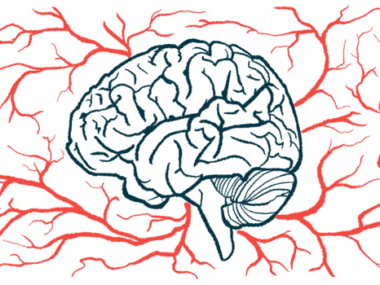Stroke rate rising for adults, children with SCD in US: Study
Findings underscore need for treatment adherence to reduce risk
Written by |

The number of stroke cases among adults and children with sickle cell disease (SCD) continues to increase in at least one U.S. state, indicating a need for greater adherence to standard-of-care blood transfusions and more attention paid to factors that can be controlled to reduce the risk of these events, a study found.
“These findings underscore the need for prevention of strokes in adults with SCD and suggest an emphasis on the management of modifiable cerebrovascular risk factors that have been demonstrated to be effective in the general population,” the researchers wrote.
In the real-world study led by Ted Wun, MD, associate dean for clinical and translational research at the University of California Davis School of Medicine, the researchers also observed that the risk of stroke increases with age, more than doubling every 20 years.
“As hematologists, our training emphasizes that the risk of stroke is highest in young children, but I think that has resulted in far less attention being paid to adult patients,” Wun said in a press release from the American Society of Hematology detailing the study’s findings.
The study, “Rates of Strokes in Californians with Sickle Cell Disease in the Post-STOP Era,” was published in Blood, a journal of the American Society of Hematology.
Guidelines from 1998 STOP study intially led to lower stroke rate
People with SCD have abnormally shaped red blood cells and often experience strokes — which happen when blood flow to the brain is blocked or a blood vessel bursts — and transient ischemic attacks, where the blockage is temporary and doesn’t cause lasting damage.
In 1998, a landmark clinical study called Stroke Prevention Trial in Sickle Cell Anemia, or STOP, found that regular blood transfusions can reduce the risk of strokes in children with SCD who are at high risk. That study supported new guidelines for treatment for SCD patients.
Now, a study using data from California’s emergency departments and hospitals, gathered from 1991 to 2019, looked at the number of new cases of stroke and transient ischemic attacks in adults and children with SCD, comparing the rate before and after the implementation of these guidelines.
Among a total of 7,636 patients, the chances of having a first ischemic stroke — caused by a blocked blood vessel — were 2.1% by age 20 and 13.5% by age 60. For intracranial hemorrhage, a type of stroke caused by a burst blood vessel, the chances were 0.5% by age 20 and 6.8% by age 60.
While the number of new stroke cases was found to drop for a few years after the STOP guidelines were introduced, they increased again from 2010 to 2019. For children, the rate of ischemic stroke increased from 165.1 to 234.9 per 100,000 person-years. Person-years is a composite unit that takes into account the number of people being assessed and the amount of time they were followed; for instance, 100,000 person-years may refer to data gathered from 100,000 people over the course of one year.
For adults, the rate of ischemic stroke rose from 303.2 to 431.1 per 100,000 person-years, the data showed.
“These trends are opposite what we would hope,” Wun said. “Based on these results, it appears that STOP guidelines haven’t been effectively implemented.”
There also were increases in the rate of hemorrhagic strokes among young adults, and transient ischemic attacks in children.
These trends are opposite what we would hope. … Based on these results, it appears that STOP guidelines haven’t been effectively implemented.
Risk factors for ischemic stroke comprised frequent hospitalizations, high blood pressure, high cholesterol, past blood vessel problems, and a previous transient ischemic attack. For intracranial hemorrhage, risk factors were a history of acute chest syndrome, kidney failure, a past stroke, blood vessel problems, and low platelet counts.
These new data, updating the modifiable risk factors of stroke, “emphasize the need to pay attention to screenings for high cholesterol, high blood pressure, and other risk factors in adults,” said Olubusola Oluwole, MD, assistant professor at the University of Pittsburgh and the study’s first author.
Overall, according to the team, these findings highlight the importance of managing these risk factors — which has been proven to reduce the risk of stroke in the general population.
According to Wun, “the preventive steps that we know help prevent stroke in the general population are just as important for people living with SCD.”
The researchers also called for further prospective studies on stroke risk for adults with SCD.
“Stroke rates increased with age and there was a trend toward even higher rates in more recent years of follow-up,” the researchers wrote. “As people with SCD live longer, there remains an unmet need to develop guidelines for primary and secondary stroke prevention in adults at highest risk.”






